











Daily core active developers reached an all-time high of 181 developers on March 22. As of June 1, Polkadot rose from third to second place in terms of ecosystem-wide developer count with 1,923 developers.
Since its launch on March 28, fast unstake has been used at least once almost every day, with an average of six unique users and 2.38K DOT unbonded per day. Polkadot nomination pools continued to grow rapidly, attaining 12,268 members and 5.32M DOT by the end of June.
OpenGov support rates on both Polkadot and Kusama were low, averaging 1.44% on Polkadot and 3.33% on Kusama, with treasury tracks having the lowest rates.
Karura took a strong lead in terms of all-time XCM transfer count with 85,412 transfers, while Moonbeam topped the Q2 chart with 7,499 transfers in this quarter alone. By July 20, XCM v3 had been used to send 5,972 messages across 44 Polkadot channels and 11,565 messages across 73 Kusama channels.
In Q2 2023, the total TVL of DeFi parachains on Polkadot and Kusama had a very brief surge period, peaking early at $236.12M on April 14, before going on a downward trend and ending up at $146.77M on June 30.
Arthswap topped the list of DEX protocols on Polkadot almost throughout Q2, followed by HydraDX and StellaSwap. By the end of June, HydraDX only trailed Arthswap by $264.29K. Moonwell Artemis and Bifrost took the lead for lending and iquid staking, respectively.
Following Binance’s announcement of support for USDT on Polkadot, USDT supply jumped up by 125.02% from 8M to 18M USDT.
Singular’s NFT sales volume began to dwindle in the second half of Q2 due to the phasing out of NFT implementation on Kusama. Three NFT marketplaces launched on Astar this quarter included Paras, ArtZero and Bluez.
Starting with a count of 25 on March 29, WASM smart contracts on Aleph Zero enjoyed a development spurt in early April, reaching 308 contracts on April 9, with an average rate of 25.67 new contracts per day. On the contrary, WASM smart contracts grew almost throughout Q2 on Astar yet very slowly. As of June 30, there were 46 smart contracts and 513,734 active users on Astar mainnet.
In terms of cold wallets, there are now three main options for Polkadot users: Ledger, Polkadot Vault, and Keystone. Whereas the first is completely a hardware wallet, the latter two offer an air-gapped experience, which brings an extra layer of security.
Development activity is defined as the number of development-related GitHub events happening on Parity Technologies’ public repositories, averaged across the past seven days. This metric mostly followed a similar pattern to those of DOT price and KSM price except in three short periods. The first period was in mid-April, when development activity did not change much whereas both DOT and KSM slowly climbed up to their respective highest prices of the quarter – $6.92 for DOT on April 18 and $37.59 for KSM on April 16 – before having a sudden drop on April 19. In contrast, in late May and mid-June, token prices stayed relatively stable while development activity peaked at 613.71 on May 28, and 600.29 on June 16.
After rising to its year-to-date maximum of 68.33 on February 16, the 30-day average number of code commits to Parity Technologies’ public repositories fluctuated between 52.53 and 67.97 commits. Similarly, the number of core active developers – defined as the number of distinct GitHub users that made at least one commit to the repositories during the past 30 days – reached its all-time high of 181 developers on March 22, and then remained fairly consistent, going below 150 only twice on April 30 and May 1. The two metrics correlated strongly (Pearson’s correlation coefficient r = 0.79).
Ecosystem-wide development activity in the first half of 2023 continued its trend from 2022. According to Electric Capital, as of June 1, Polkadot maintained its second place in terms of full-time developer count with 645 developers, and rose from third to second place in terms of total developer count with 1,923 developers. The percentage of full-time developers had barely changed since the beginning of 2023, with an average of 33.93%.
When it comes to staking on Polkadot, one of the most noteworthy development points in 2023 was the introduction of fast unstake, which allows stakers to bypass the usual 28-day unbonding period. Since its implementation on March 28, fast unstake has been used at least once almost every day, with an average of six unique users and 2.38K DOT unbonded per day. The number of unique users was remarkably high in late June, reaching a maximum of 29 users on June 21. The amount of DOT unbonded observed two big peaks: 20.25K DOT on May 12 and 26.26K DOT on June 14. Both of these peaks occurred due to individuals unstaking huge amounts at once (12.17K DOT and 24K DOT, respectively).
Polkadot nomination pools continued to grow rapidly, attaining 12,268 members and 5.32M DOT by the end of June. Daily rewards from pools also rose, albeit slowly and not as consistently as pools themselves, from the range of 1.06K-2.55K DOT in April to that of 1.69K-3.56K DOT in June. Pools’ share of total rewards increased as well – from 1.11% in April to 1.50% in June, on average – thanks to the amount of daily rewards received by individual nominators mostly staying within 121.41K-190.93K DOT.
It is assumed that nominators would choose to back validators with low commission to increase rewards, and validators with high self-stake because it suggests “skin in the game”. Data supported these assumptions. On June 30, 164 validators with less than 15% commission received 21,374 nominations, accounting for 95.93% of the total nomination count. When it comes to self-stake, an average of 42.40 nominations were attributed to active validators with zero self-stake, compared to 142.27 nominations for the other active validators. These numbers were very similar to those obtained on May 31, suggesting that these patterns are likely the case in general.
As of July 12, whales (defined as accounts that hold more than 0.1% of the total token supply) took up only 0.01% of total holder count but held 65.93% of total tokens (879.22M DOT). On Kusama, the numbers were 0.06% and 71.24% (9.81M KSM), respectively. Excluding system accounts, which are operated by the systems for specific purposes (e.g., treasury, crowdloan funds, and nomination pool stake) and whose movements are therefore controlled, this left 61.54% of total DOT and 70.16% of total KSM in the hands of real-user whales. These statistics pointed to even more pronounced wealth clusterization in Q2 2023 than in the previous quarter. This deviation from the decentralization ethos of Web3 presents great risks to system security, governance maintenance, and market stability.
About seven months after having been deployed on Kusama, OpenGov officially went live on Polkadot on June 15 with the passing of Referendum 121. By July 29, a total of 90 referenda had been submitted in 11 out of 15 tracks on Polkadot, and 248 referenda in 13 tracks on Kusama. The six treasury tracks – Treasurer, Small Tipper, Big Tipper, Small Spender, Medium Spender, and Big Spender – unsurprisingly accounted for the majority of the referenda, 84.44% on Polkadot and 68.95% on Kusama. In total, the Polkadot treasury had awarded 891.10K DOT ($4.75M) and the Kusama treasury 219.70K KSM ($6.06M) to OpenGov referenda.
In OpenGov, support rate is defined as the proportion of aye and abstain votes (without conviction) over the total token issuance. Support rates on both networks were low, averaging 1.44% on Polkadot and 3.33% on Kusama. Despite dominating in terms of referendum count, treasury tracks were among the tracks with the lowest support. These numbers point to a need for raising interest in OpenGov.
As of July 29, Polkadot treasury had a balance of 45.43M DOT ($239.02M) and Kusama treasury 277.55K KSM ($6.48M). The fact that treasury-track referenda with values as high as 540K DOT and 50K KSM were approved with only 0.33% and 0.31% support rates, respectively, should raise the alarm about potential treasury misuse and even depletion of treasury funds in the future.
For teams looking to build Web3 projects, the Web3 Foundation Grants Program has been a consistent source of funding. Thirty-five out of 82 projects (42.68%) in the first half of 2023 were related to smart contract implementation and tooling, demonstrating Web3 developers’ growing interest in this area. The development of Substrate runtime modules remained popular, with a total of 22 projects (26.83%). For more information about the Web3 Foundation Grants Program, check out its website.
Of the top 10 parachains in terms of XCM transfer count, four were on Polkadot and six were on Kusama. Karura maintained its strong lead with an all-time count of 85,412 transfers. Trailing behind were Bifrost on Kusama, Moonbeam, Acala, and Moonriver, each of which had had more than 30K transfers by June 30. In Q2 2023 alone, Moonbeam topped the chart with 7,499 transfers, which may have been due to the renewal of its parachain slot and the launch of Uniswap V3 in June. Acala, which also re-signed its slot this quarter, and Karura followed with 5,586 and 5,165 transfers, respectively.
It is therefore no surprise that all of the top five parachains appeared in the top 12 XCM channels by transfer count. The Bifrost-Karura pairing on Kusama accounted for 42,869 transfers, 2.47 times more than the number of transfers between the next ranked pairing, Moonbeam-Acala on Polkadot (17,376 transfers). Note that 11 of the top 12 channels were between chains heavily involved in DeFi activities, showing that DeFi was still the most widely used application of XCM.
Considered a groundbreaking technology that will amplify the Web3 interoperability, XCM v3 was launched on both Polkadot and Kusama in Q2 2023. The upgrade introduced bridging capabilities with external networks, improved programmability features, cross-chain locking, further asset exchanges, and cross-chain functionality involving non-fungible tokens. By July 29, XCM v3 had been used to send 5,972 messages (at a rate of 132.71 messages per day) across 44 Polkadot channels, and 11,565 messages (106.10 messages per day) across 73 Kusama channels. The four most active parachains in terms of XCM v3 message count were Moonriver (6,042 messages), Bifrost on Kusama (4,743 messages), Asset Hub on Kusama (formerly Statemine, 3,155 messages), and Moonbeam (3,113 messages).
In terms of chain fees, the system parachain Encointer surprisingly took the top spot in Q2 2023 with $123,842.92. This towering number was more than five times the amount for the runner-up Calamari, whose $21,986.35 was in turn 3.58 times greater than the third-place Khala’s $6,139.35.
In Q2 2023, the total TVL of DeFi parachains on Polkadot and Kusama had a very brief surge period, peaking early at $236.12M on April 14, before going on a downward trend and ending up at $146.77M on June 30. This pattern was very similar to that of Acala, which had been the number-one parachain until its TVL started to drop considerably on April 20 and pulled Acala down to fourth place by the end of June. Moonbeam had been the leader since May 4, whereas its canary network Moonriver had been at fifth place, and Acala’s canary network, Karura, at sixth.
After rising to its year-to-date maximum of 68.33 on February 16, the 30-day average number of code commits to Parity Technologies’ public repositories fluctuated between 52.53 and 67.97 commits. Similarly, the number of core active developers – defined as the number of distinct GitHub users that made at least one commit to the repositories during the past 30 days – reached its all-time high of 181 developers on March 22, and then remained fairly consistent, going below 150 only twice on April 30 and May 1. The two metrics correlated strongly (Pearson’s correlation coefficient r = 0.79).
From April 20 to April 22, ASTR’s sudden drops in price caused DEX protocols on Astar such as ArthSwap and Sirius Finance to experience great declines in TVL, a sharp contrast to the surge in early February. Nonetheless, Arthswap still topped the list of DEX protocols on Polkadot almost throughout Q2, followed by HydraDX and StellaSwap. The huge increase in StellaSwap’s TVL on May 3 was because DefiLlama started to track the new concentrated liquidity Automated Market Maker (AMM) protocol, StellaSwap v3. HydraDX also enjoyed a surge on April 12, when it added three Polkadot native assets – ZTG, iBTC, and USDT – to its innovative AMM, Omnipool. As of June 30, HydraDX trailed ArthSwap by $264.29K. With more assets constantly being added to the Omnipool, HydraDX will likely surpass ArthSwap in Q3 2023.
On Kusama, Solarbeam remained the clear winner despite experiencing declines almost throughout the quarter, and Bifrost was the clear runner-up, leaving the rest of the DEX protocols on the network far behind. Interestingly, the two protocols had extremely similar TVL patterns (Pearson’s correlation coefficient r = 0.93), though Bifrost’s was more stable during the middle period of Q2.
Parallel was the top lending protocol in terms of TVL up until April 27, when Moonwell Artemis took the lead by $141.30K. The gap between the two protocols considerably widened on May 7, when Parallel’s TVL dropped by 2.29%. Since the beginning of June, Parallel’s TVL pattern had been highly similar to Moonwell Artemis’s (Pearson’s correlation coefficient r = 0.86).
Most of the liquid staking protocols on Polkadot and Kusama had a disappointing quarter in terms of TVL trends. Just like the DEX protocols on Astar, Algem also suffered due to the sudden decreases in ASTR’s price. Despite starting Q2 at the top rank, the TVL of Lido on Moonbeam quickly shrunk by 51.74% on April 8, and then kept declining for the rest of the quarter. This pattern was expected after MixBytes had initiated their five-phase termination of Lido on Polkadot and Kusama. On June 22, the termination entered Phase 3, in which unbonding was enforced and assets were automatically unstaked from the relay chain. Lido’s TVL on Moonriver declined by 35.52% on that day as a result. Thanks to Lido’s and Algem’s big drops, Bifrost had been leading the chart since April 20.
On May 25, Binance announced that it had begun support for USDT on Polkadot. Following this news, USDT supply on the network jumped up by 125.02%, from 8M to 18M USDT. As of June 30, USDT supply on Polkadot was 5.14 times greater than that on Kusama – more specifically, on the parachain Asset Hub (formerly Statemint on Polkadot and Statemine on Kusama).
As a result of Binance’s integration, the number of USDT transfers, the amount transferred, and the number of USDT holders on Polkadot all surged on that day – by 133.33%, 930.69%, and 4.65%, respectively. Both Polkadot and Kusama had other spikes in USDT transfers on June 10. Whereas transfer count increased by 192.31% and transfer amount by 4,244.21% on Polkadot, the numbers on Kusama were 135.48% and 30,145.00%, respectively. These gigantic upsurges occurred after a series of events adversely affecting a fellow dollar-denominated stablecoin, TrueUSD. First, TrueUSD announced that its minting activities via Prime Trust had been paused, and soon after that, TUSD became depegged from the US dollar, falling as low as $0.9964. These events might have caused USDT to temporarily rise in popularity.
Continuing the trend from Q1 2023, Singular maintained its dominance in the NFT market throughout the first half of Q2, averaging $1.77K in daily sales volume. However, as expected with RMRK’s decision to phase out NFT implementation on Kusama, Singular’s dominance began to dwindle, averaging $524.96 in sales volume per day from May 14 to June 30. Most of the sales volume on tofuNFT came from the Polkadot parachain Astar ($543.08 on average), whereas Moonbeam ($84.17) beat Moonriver ($21.62) on Moonbeans.
In April, Astar witnessed the launches of three new NFT marketplaces: Paras – a marketplace focusing on digital collectibles – on April 6, ArtZero – a marketplace built completely in ink! – on April 14, and Bluez – the first community-driven NFT marketplace on the network – on April 17. By June 30, seventeen items from four collections had been sold on Paras for a total of $396.34. On ArtZero, five collections had been created, including AI Serpenators, which contains items submitted to a four-week AI contest in collaboration with SubWallet to celebrate the thriving Astar NFT ecosystem. As for Bluez, at the time of writing, AstarDegens is the number-one collection in terms of total volume (8.56M ASTR), followed by AstarCats (2.93M ASTR) and Astar Punks (1.89M ASTR).
NFTs trading and minting on Bit.Country experienced multiple peaks in Q2 2023, yet the peaks in total minted NFTs, total traded NFTs and total NFT trading volume did not coincide. 1000 NFTs were minted on April 17 whereas a maximum of 729 NFTs were traded on May 2, the same day that Marketplace 2.0 was released together with a campaign where users received rewards for purchasing NFTs. The highest volume, however, was recorded on April 24 for $1,965.69.
July witnessed the release of Bit.Country Space and COSMIZE app on iOS, marking steady development for the metaverse sector in the Polkadot ecosystem.
Starting with a count of 25 on March 29, WASM smart contracts on Aleph Zero enjoyed a development spurt in early April, reaching 308 contracts on April 9, with an average rate of 25.67 new contracts per day. After that, only 1.11 contracts were created per day on average. As of the end of Q2 2023, Aleph Zero had 399 smart contracts on its mainnet. Similarly, the cumulative number of active smart contract users had a sudden surge from 51,701 on April 7 to 56,403 the day after, and then increased little by little, ending up at 62,324 users on June 30.
Unlike on Aleph Zero, on Astar, WASM smart contracts grew almost throughout Q2, albeit very slowly. The cumulative number of active smart contract users barely changed. As of June 30, there were 46 smart contracts and 513,734 active users on Astar mainnet. In Q3, it is expected that Astar and its canary network, Shiden, will welcome ApolloSwap, the first ink!-based WASM DEX on Polkadot.
In blockchain, one of the most important things an account holder needs to consider is which wallet(s) to use. It is no surprise that, with a high number of active developers in the ecosystem, Polkadot offers a wide range of wallet options. These options can be divided into two categories: hot wallets – i.e., wallets that are online, such as smartphone apps or browser extensions – and cold wallets – i.e., wallets that are offline, such as hardware wallets or air-gapped devices. In terms of cold wallets, there are now three main options for Polkadot users: Ledger, Polkadot Vault, and Keystone. Whereas the first is a purely hardware wallet, the latter two offer an air-gapped experience, which brings an extra layer of security. The following table shows a quick comparison of what features these three wallets have, as well as which hot wallets are compatible with the cold storage options. Note that SubWallet is the only hot wallet that offers support for all of the three cold wallets, via both its mobile app and its browser extension.


| Feature | Ledger | Polkadot Vault | Keystone |
|---|---|---|---|
| Air-gapped experience | |||
| Secure Element | |||
| Multi-seed phrase | |||
| Transaction decoding | |||
| Staking | |||
| Polkadot NFTs | Via hot-wallet applications | ||
| Crowdloans | Varies by parachain candidate | ||
| Governance | |||
| Compatible mobile wallets | |||
| Compatible browser extensions |

Q2 2023 was marked by several advancements that solidified Polkadot’s position as a leading blockchain network. Whereas the deployment of OpenGov pointed toward a more robust governance structure, the launch of XCM v3 reflected Polkadot’s commitment to enhanced interoperability. More notably, during Polkadot Decoded 2023, Polkadot’s biggest yearly conference, co-founder Gavin Wood announced his vision for a potential new direction for Polkadot's development. This new version shifts the focus from chain to application, making Polkadot an ubiquitous multi-core supercomputer that powers a plethora of user-friendly applications that can span multiple chains. Parachain auction will be phased out in favor of agile coretime rental that allows chains to optimize blockspace use by demand. Of course, OpenGov means that the future of Polkadot is totally in the hand of the community. Yet given that Gavin Wood immediately has started coding towards agile coretime, this new and promising future can be realized rapidly.

Dotinsights is a research-focused initiative by SubWallet, the leading non-custodial Polkadot and Kusama wallet. By providing the most comprehensive and up-to-date Polkadot & Kusama Ecosystem Map, along with data-driven Polkadot Deep Dive reports on a quarterly basis, our vision at Dotinsights is to become the official and trusted research hub and data platform of Polkadot.














